Joyce Wethered in 1922.


Most famous for hosting the Mixed Foursomes scratch competition every fall since 1921, Worplesdon's most acclaimed member, Joyce Wethered, won the event eight times with seven different partners...including once with Bernard Darwin. Molly Gourlay of nearby Camberley Heath, an architect who worked with Tom Simpson also won this event twice. It should also be noted that J Wethered was the club President from 1963 until 1997, the year she died.
Despite being less than 6500 yards from the back markers, Willie Park Jr was able to route a course which uses the rolling land to enhance the difficulty. Fairways tend to be quite generous, although gaining the best angle for creating options of approach is at a premium. Abercromby is thought to have designed the greens and bunker scheme. Although, the course features many large front- to- back and two/three tiered greens mixed with a variety of more subtle surfaces which are Park Jr hallmarks. Sometime in the early 30s, Colt was called upon to revise the bunkering and it is clear the bunker scheme we see today is very different from that shown in aerials of 1922. It could well be that the precise nature of approaching on #s 4, 5, 11, 12, 13 and 15 are down to his handy work. No matter who is responsible, Worplesdon features many very well placed bunkers. Regardless of the exact attributions, any course with contributions by Colt, Abercromby Braid and Park Jr is bound to impress and Worplesdon is indeed impressive. In recent years the club has undertaken a programme of tree removal and underbrush clearance to great effect. Interior views have opened up and play from the many stands of trees is more than possible. Although it should be said that many more trees could easily be removed and none would be the wiser.
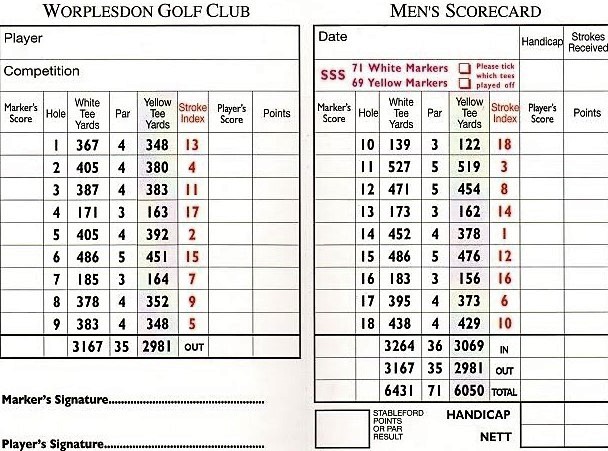
The 1st strikes me as the perfect opener; a fairly short hole with an inviting downhill drive, but enough trouble to vex the golfer and cause a regretable five to be written on the card.
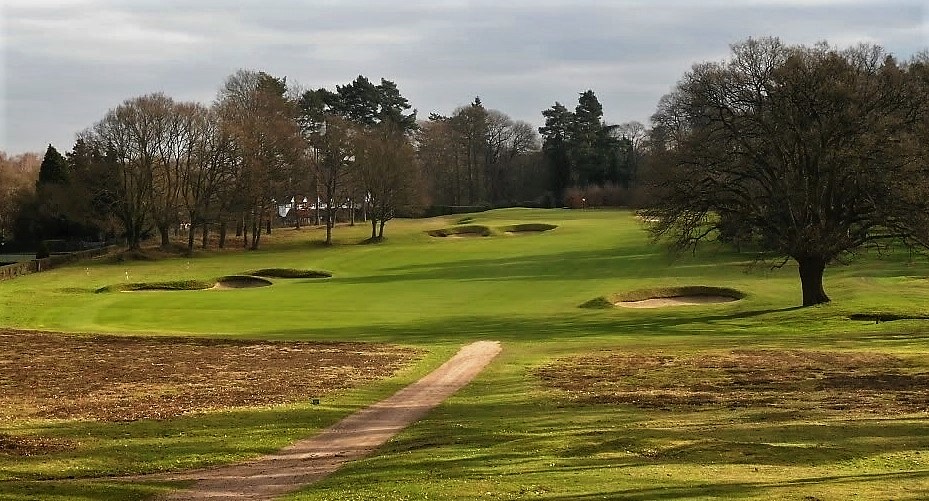
One of at least a half dozen holes where the landing zone cannot be seen, the blind drive second plays along a hill which turns drives hard right into the low part of the fairway toward tree trouble. Like the first, the green is quite subtle. Below is an interesting take on bunker presentation for some fairway pits, instead of heather, the goal seems to be a meadow top look. Indeed, except for a few areas it is difficult to tell Worplesdon is meant to be a heathland course.
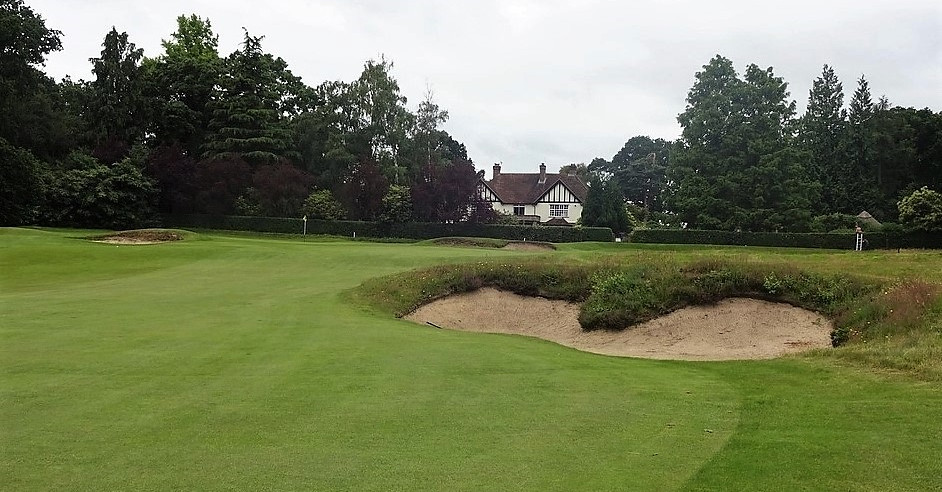
#3 turns back on the second and runs parallel with the practice ground on the lowest part of the property. This mid-length two-shotter features three key ingredients, a centre-line bunker, a green running boldly from front right to rear left and the appealing backdrop of the 1st fairway which signals there is a play long.
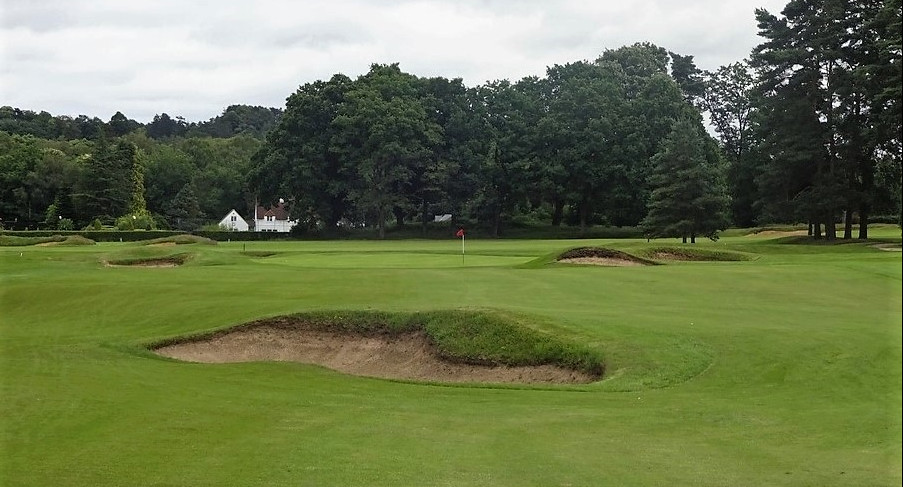
The set of 3s is excellent and very diverse, the fourth takes the golfer back to the house making for a convenient boozer's loop, one of a handful provided by the routing.

The hole was quite a bit more intimidating back in the day.

The fifth hole is the first with the call of heather beckoning...all down the right. A wonderful bunker crowds the left, on the exact line of safety. A double dip shy of the green makes for an interesting blind approach.
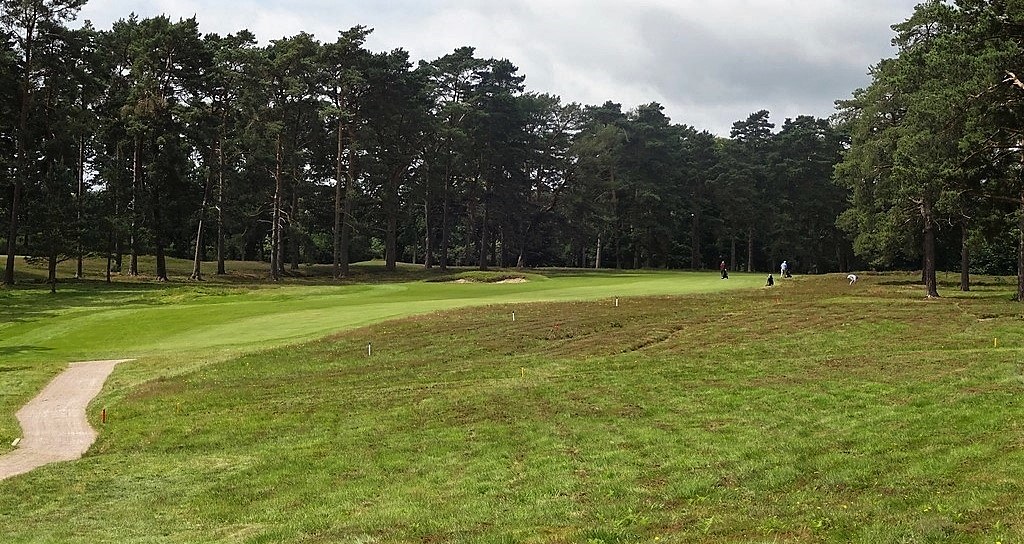

The short three-shot sixth plays over an attractive top shot bunker then blindly downhill. A birdie is certainly on the cards, but one must guard against being over-zealous on the approach. There are hidden bunkers to the rear of the swiftly backsliding green. Below is a look at the green from the 7th tee.
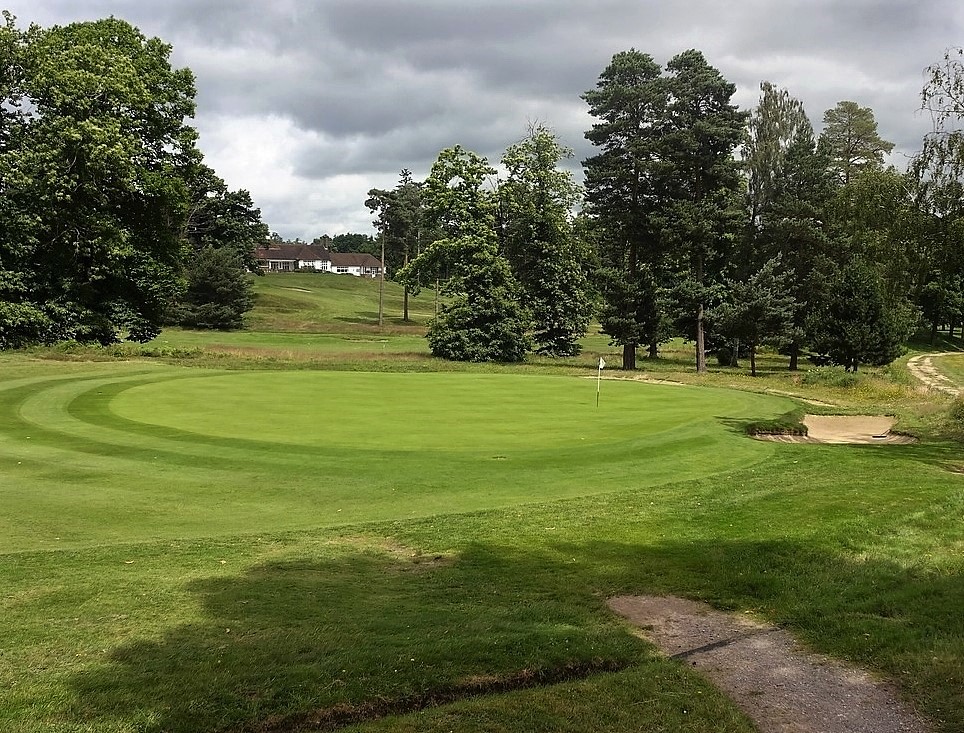
Deceptively uphill, the two-tier 7th looks more fearsome than it is, but a par of 3 is an excellent score.

The opening seven holes and the 18th are fairly bunched together without being crowded. The following three holes are more secluded in nature. The eighth plays less than its yardage suggests and many flat bellies must fancy their chances of reaching this unseen green with a big drive. The main defense for this hole is its severe two-tier green with the back tier running with the grade of the downhill approach. It is thought Roger Wethered took inspiration for this remodelled green from Pandy (6th) at the magnificent Musselburgh Old. The green previously had two tiers, but was not as elegant as the later Wethered design which was completed in the mid 1930s.
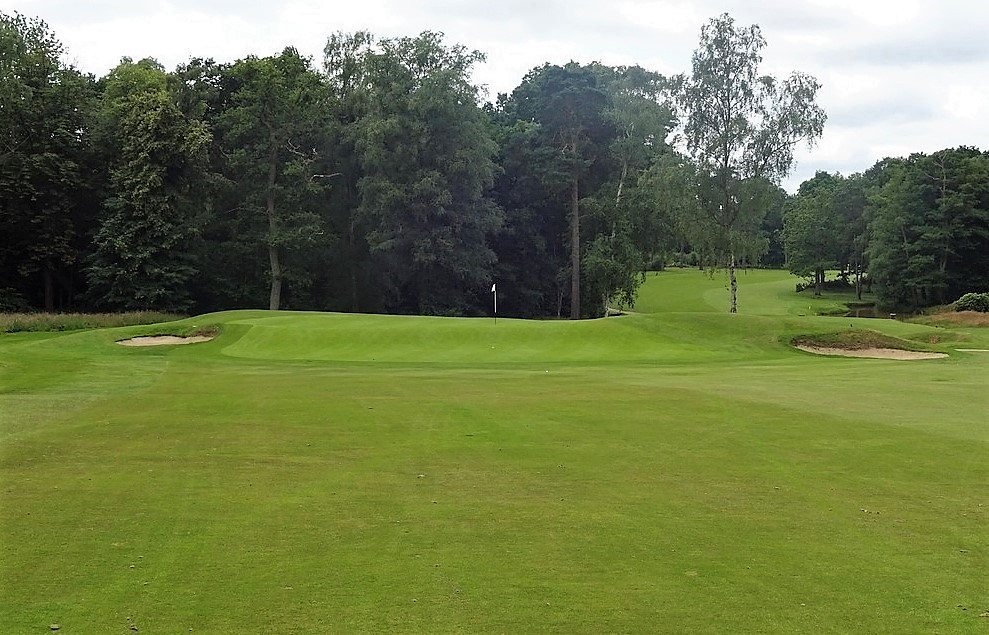
If there is a disappointing hole on the front nine its the ninth, though it isn't easy by any means. The hole bends right around water and finishes up at a rather deceptively non-descript green tucked near the property boundary. I say deceptive because the green looks flat but moves alarming from left to right and toward the rear. Below is an old photo of the hole when the tees were further forward.

The back nine is reminiscent of Berkshire Red with its configuration of three 3s, three 4s and three 5s. More importantly, there is a remarkable variety in each of the groups which is hard pressed to be outclassed anywhere in the heathlands. Most unusually, a par 4 is not encountered until playing the last hole in the secret garden across the Guildford Road.
The short 10th plays over Bridley Pond, but it is the three tier green which marks this as a good hole. The final tier, where the hole is often located, is split by a prominent ridge. Once again, there is bunkering to the rear which may give pause to the naturally aggressive player.

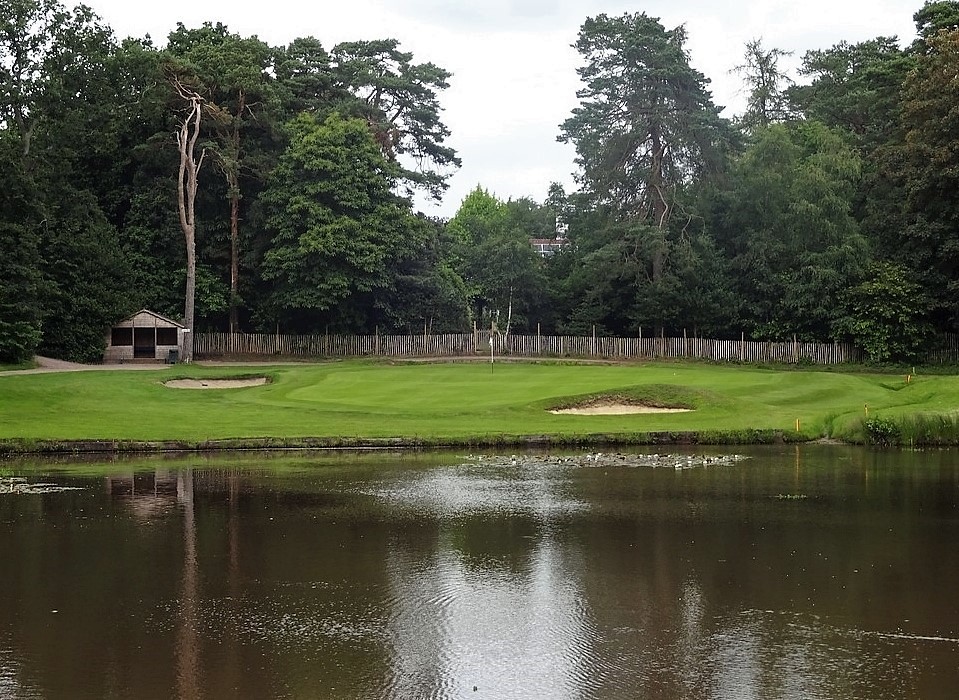
After making the perilous road crossing the golfer arrives at the high point of Worplesdon for it is these four marooned holes which could arguably be the best on the course. The most famous of the lot is the 11th. Routed over attractively rolling ground, this hole bears its teeth for those having a go at the green in two. The bunkering creates a zig zag effect whereby it is important to make the final approach from the right. The left green-side bunkering extends forward of the putting surface making the play from the same side difficult to judge. The 11th is famous, but the 12th is I think the superior hole. It is thought the green is by the hand of Willie Park Jr.
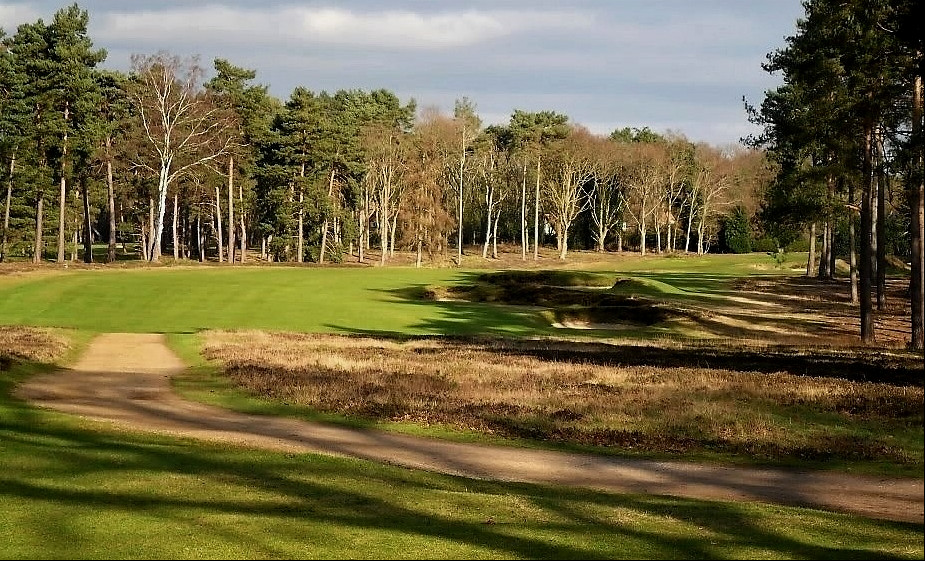
If one successfully takes on the nest of bunkers he is left with a daunting approach to this short par 5. The other option is to lay-up left and trust to your wedge and putter.

The thirteenth could be besmirched as a dumb blonde, but there surely must be some allowances for a lovely set piece such as this. Don't be fooled by the beauty of this hole because it's penal design has effectively created an island green which is very difficult to hit.
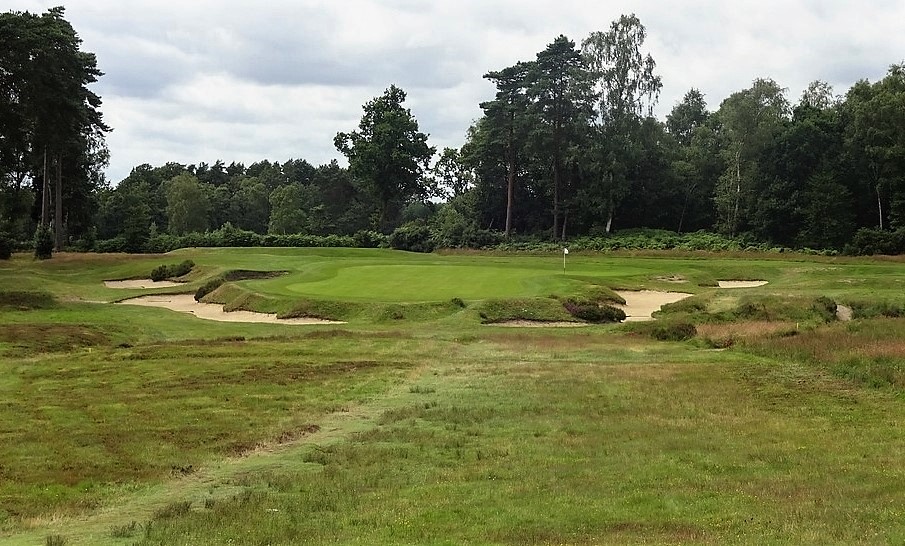
An old photo of the hole.
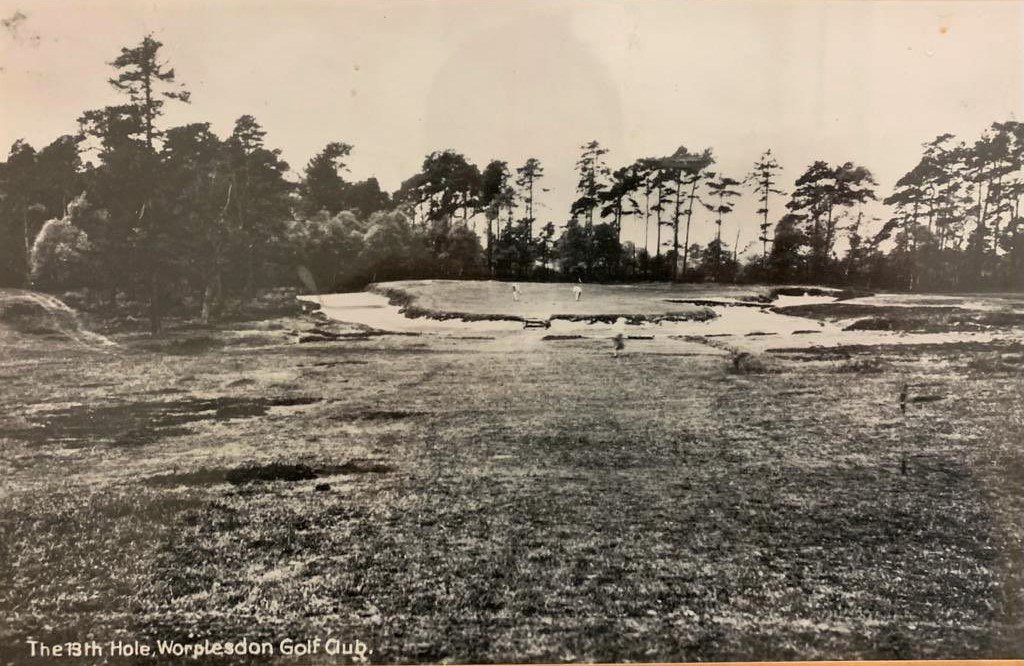
Another old photo of the hole!

The final hole in this oasis is perhaps the most testing par 4 on the course. The centre-line bunker and hump make it difficult to ascertain the yardage home. However, don't lose sight of the significant bunker guarding the left flank off the tee; it is a further carry than it seems.
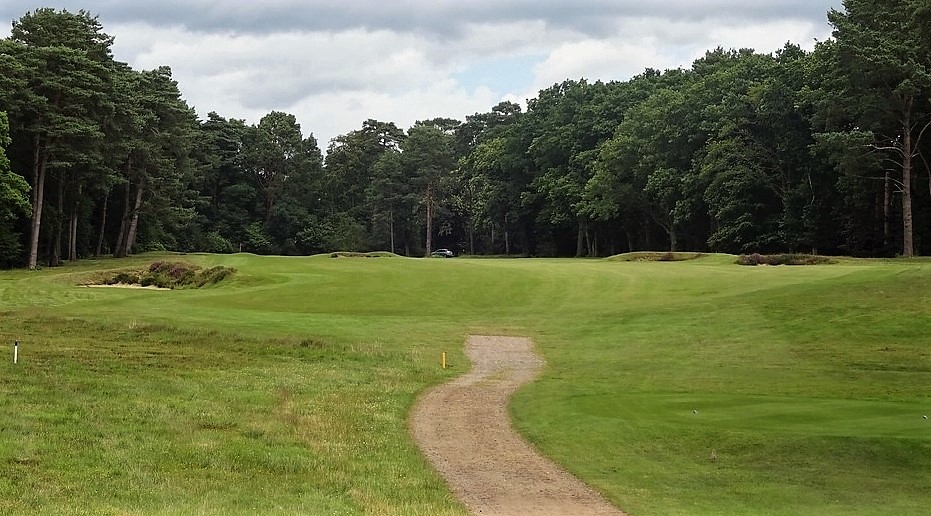
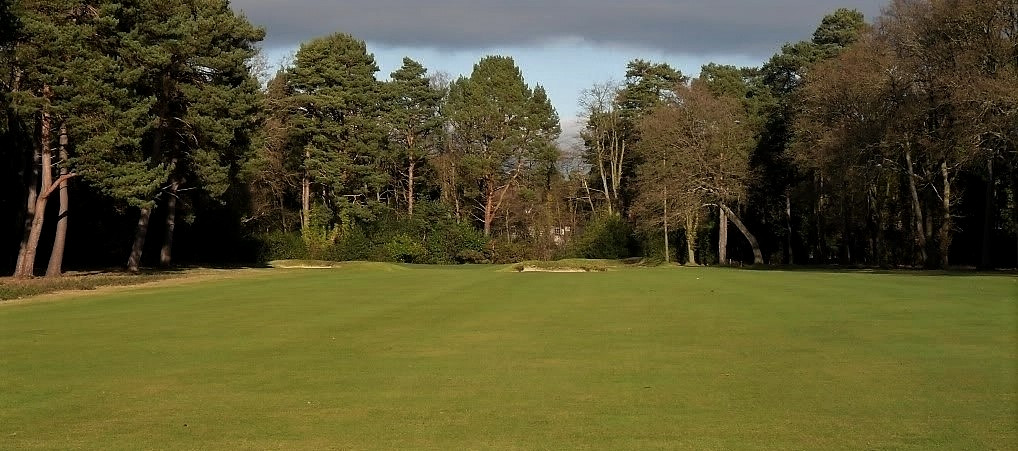
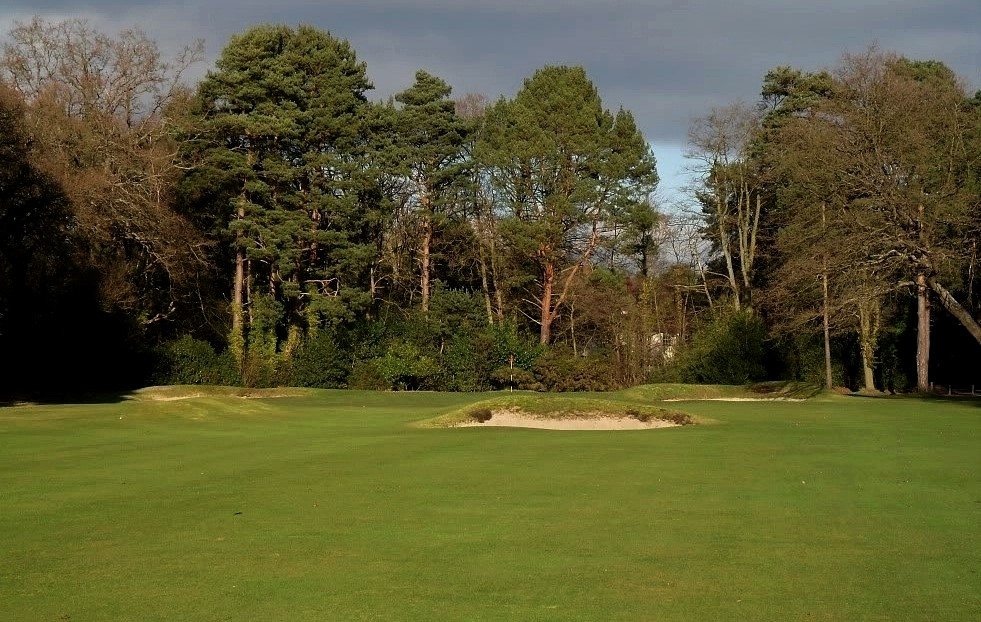
The walk back over the Guildford Road isn't something to look forward to, but I think most would agree the effort for double crossing the road is paid back in spades. #15 is the final par 5 and it too is reachable. The entire hole sits in a bit of a valley and will often be more lush than the remainder of the course. Unlike the other blind tee shots, the landing zone isn't terribly generous. One must attack the right side fairway bunker to gain the fat side of the fairway and a better approach. The easy option left has a drainage ditch lurking which is reachable. Below is a look at the fairway from a well forward position.
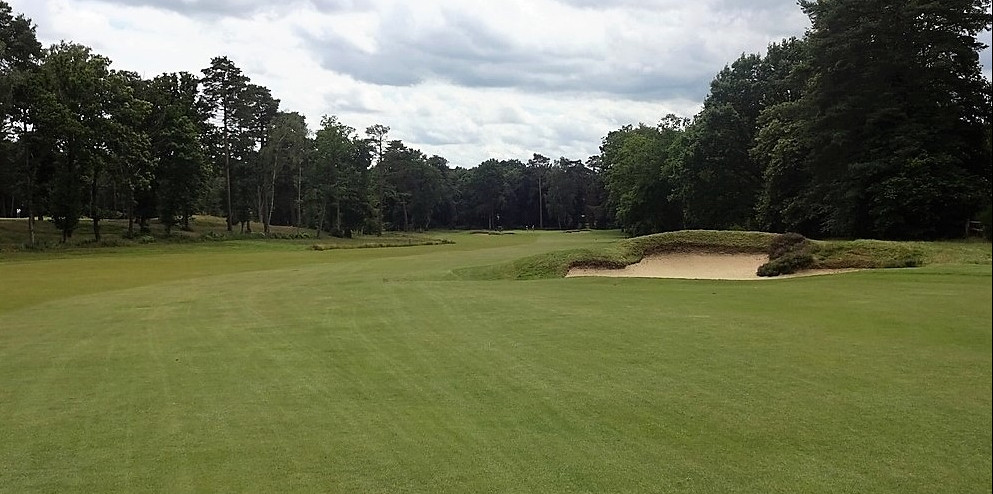
The approach from the left must cope with the forward left bunkers.
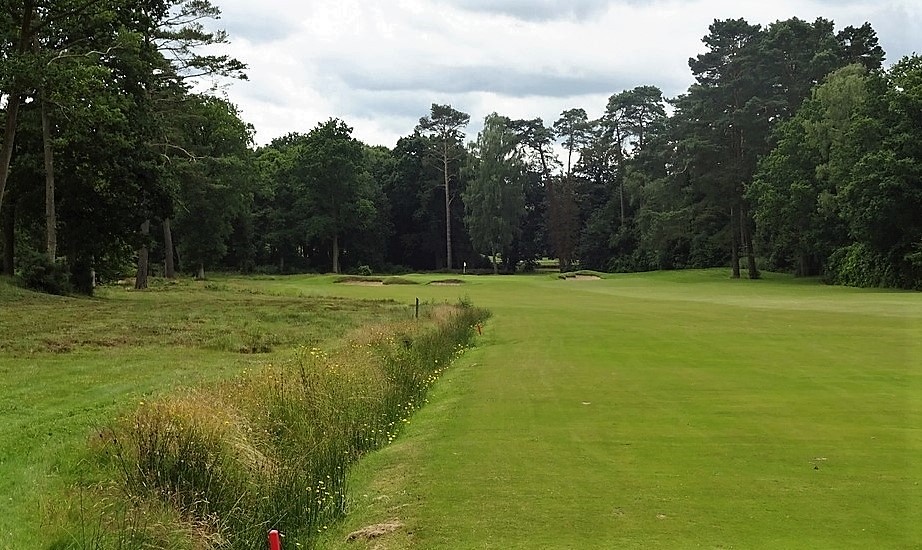
The last of the par 3s bring this remarkable stretch of holes in which there is only one two-shotter in seven holes to a close. I believe this hole used to have one solid bunker cut into the hill and a virtually blind tee shot with perhaps only the flag visible. Now there are sentinel bunkers left and right with a gap cut through the upslope. No matter, even with a better view its difficult to tell oneself to hit enough club. Any weak effort right will be grabbed by hidden bunker, or worse, gorse.
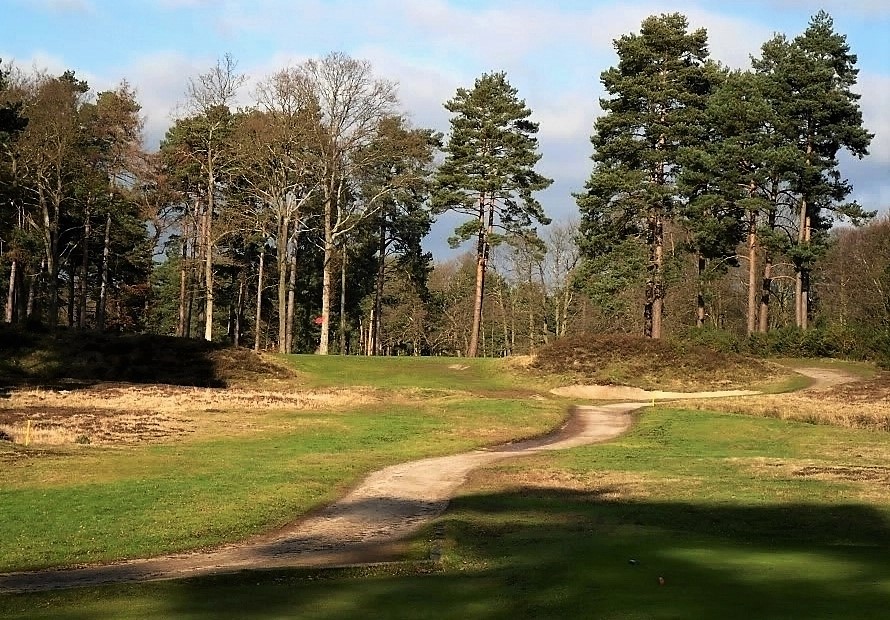
The penultimate hole may be my favourite two-shotter on the course and it absolutely seals the deal of the back nine being among the very best in England. The green is angled beautifully to shed approaches which are either too ambitious or coming from the wrong angle on the right side of the fairway. However, the sharpish angle of the dogleg suggests that right is the safer play off the tee. If the hole was widened out just a bit down the left the trickery would be more effective.
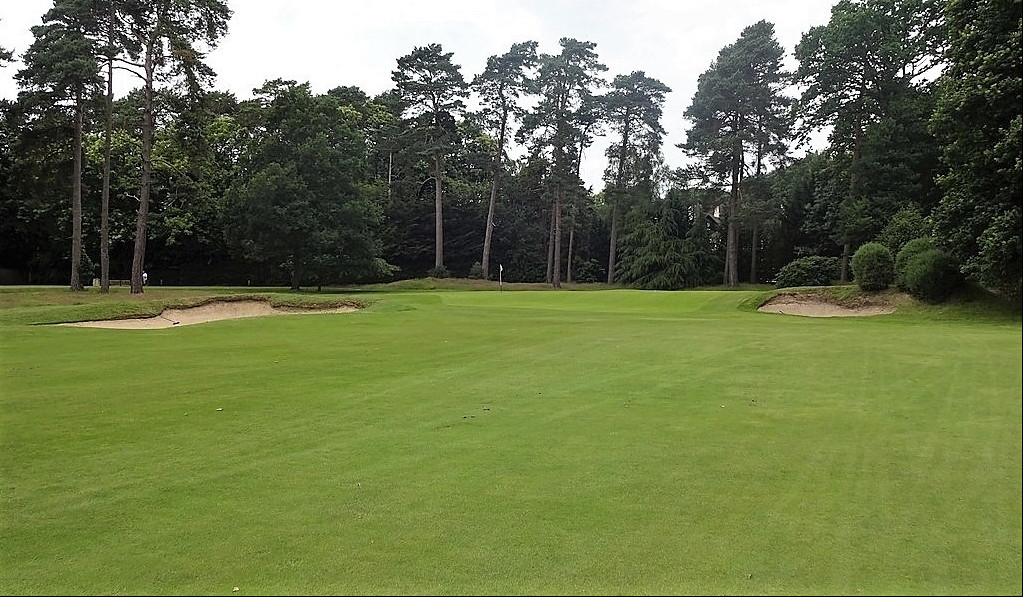
Worplesdon is replete with clever driving holes and the home hole is one such example. Playing fairly long at 430ish yards, the excellent 18th brings the golfer home with a tough ask. The drive is blind to a wide fairway, but keeping a bit left offers a shot up the gut of the green. Below is a look at the green from the right which illustrates how inaccurate driving is treated, death by a thousand paper cuts.


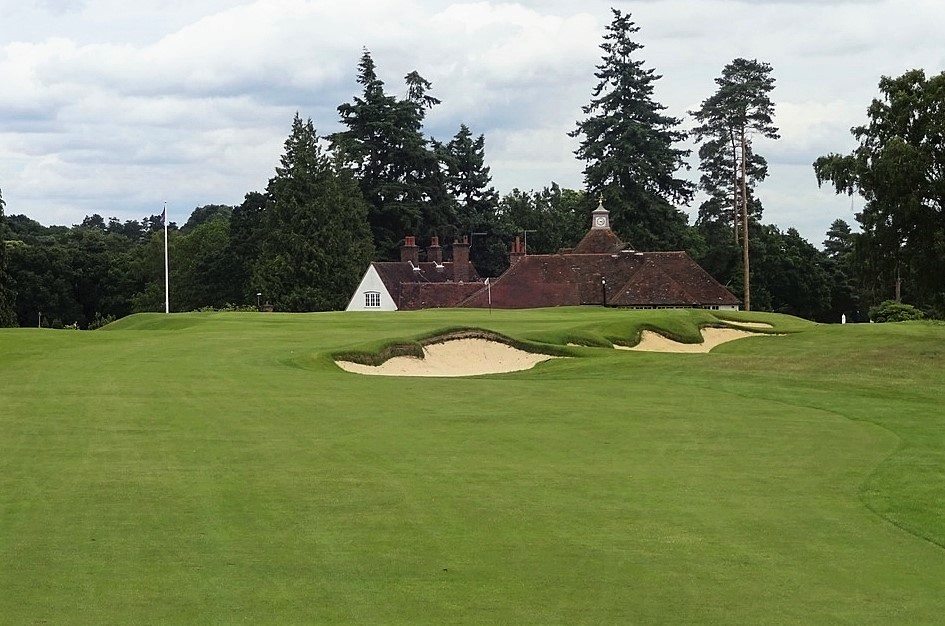
I find Worplesdon to be an absolute delight to play. If the entire course were the quality and variety of the back nine all would sing its praises as loud as any course in England. Even so, Worplesdon is of a very high standard and should be better known. A few holes on the front nine may not be up to the task, but these are minor quibbles when there are so many very fine holes. Worplesdon is more than a casual trip filler or one of the "three Ws"; its many great 3s, 4s and 5s are proof positive of this. For visiting golfers to London hoping to land bigger fish...look no further...Worplesdon is big fish. 1* 2016
Ciao